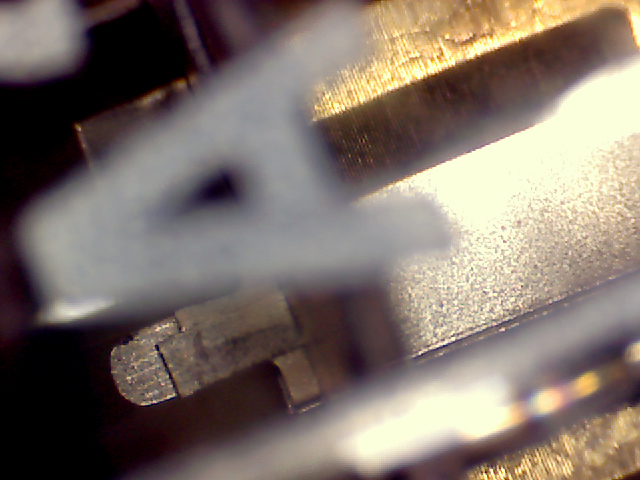|

A photomicrograph of the frame grid in an A2688 triode. From - The New Frame Grid Valves by J B Dance.
If frame-grid valves are as good as is claimed, would it not be possible to 'ginger-up' many existing television receivers by changing the old types of valve used in them for frame-grid types?
That is a question typical of many received at Mullard House from keen service engineers who wish to provide their customers with all the advantages of present-day valve manufacturing techniques. The answer to these questions is an uncompromising No.
Frame Grid Valves
The introduction of frame-grid valves to television circuits heralded major advances in receiver design. Sensitivity was increased, signal-handling capabilities were improved and noise was reduced. In fact, the performance with the new types of valve was so much better that today, few, if any, commercial receivers do not embody frame-grid valves.
But these receivers are specifically designed for frame-grid valves. They are not simply old types of circuit with new types of valve. Not only would the old circuits fail to do justice to the potentialities of the new valves but, in many instances, the use of frame-grid valves would give completely unacceptable performance. And this is likely to happen if frame-grid valves are used by the service engineer as direct replacements in existing receivers.
The features of frame-grid valves are the closeness of the winding of the fine wire of the control grid and the nearness of this winding to the cathode. The outcome of this is that a greater degree of control of the electron stream emitted from the cathode is exercised by the signal voltage applied at the input grid. In other words, the mutual conductance or slope of the valve is greater, and greater amplification is thus possible. Because of the greater gains possible with frame-grid valves, great care has to be taken in circuit design to prevent instability occurring or excessive drive being applied to subsequent stages.
Instability
Instability is a consequence of the transfer of part of the voltage developed in the output circuit of an amplifier to the input circuit via anode-to-control-grid capacitance or stray wiring capacitance. If this 'feedback' voltage is such that it reinforces the normal signal voltage at the input of the valve (that is, if the feedback is positive) then, from the valves point of view, the input signal to be amplified is larger, and consequently the output voltage will also be larger. Hence the voltage fed back to the input will also be larger. If either the feedback factor (that is, the fraction of the output voltage which is fed back) or the forward gain is high, the condition can arise whereby the feedback is sufficient to sustain itself even when the normal signal ceases, and oscillation will occur.
The capacitances which form the feedback path offer less impedance to high-frequency signals than to low, so that the danger of instability is potentially greater in the RF and the IF stages of a receiver - in fact, just where frame-grid valves are likely to be used.
It will be evident therefore that, unless a receiver is designed to utilise the greater gains possible with frame-grid valves while maintaining an adequate margin of safety against instability, the extra gain will ruin the performance of the receiver.
Automatic Gain Control
Automatic gain control is the means whereby the effective gain in a receiver is selectively reduced in order that large aerial signals can be handled. This reduction is achieved by applying part of the rectified signal from later stages of the receiver to the earlier stages. To prevent the control acting with all signals - and so simply reducing the overall gain of the receiver without discriminating against the large signals - AGC systems are designed to operate only when signals stronger than some arbitrary value are received. If the forward gain of the receiver is increased by introducing frame-grid valves without making appropriate adjustments to the AGC system, the outcome is simply that the weaker signals are also controlled, and thus the full potential of the higher-gain valves is not realised.
The effect on receiver performance is not catastrophic, but the signal-handling capability of the receiver is reduced, and of course, the advantages of the higher gain of the frame-grid valves are completely wasted.
Replacements
The above examples should be sufficient to substantiate the answer always given when we are asked if frame-grid valves can be used as direct replacements for earlier types of valve in existing television receivers. Most certainly, frame-grid valves in pre-frame grid valve circuits are bad. But equally certainly, when used in correctly designed circuits, frame-grid valves are undoubtedly the best that can be offered for first-class television reception.
|